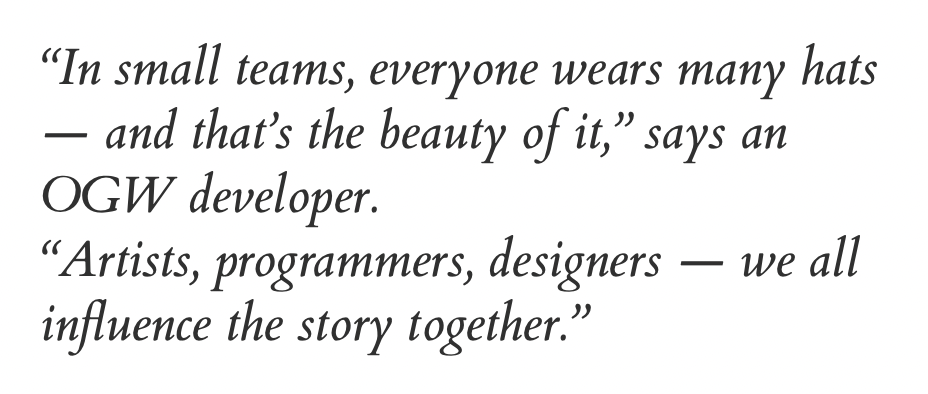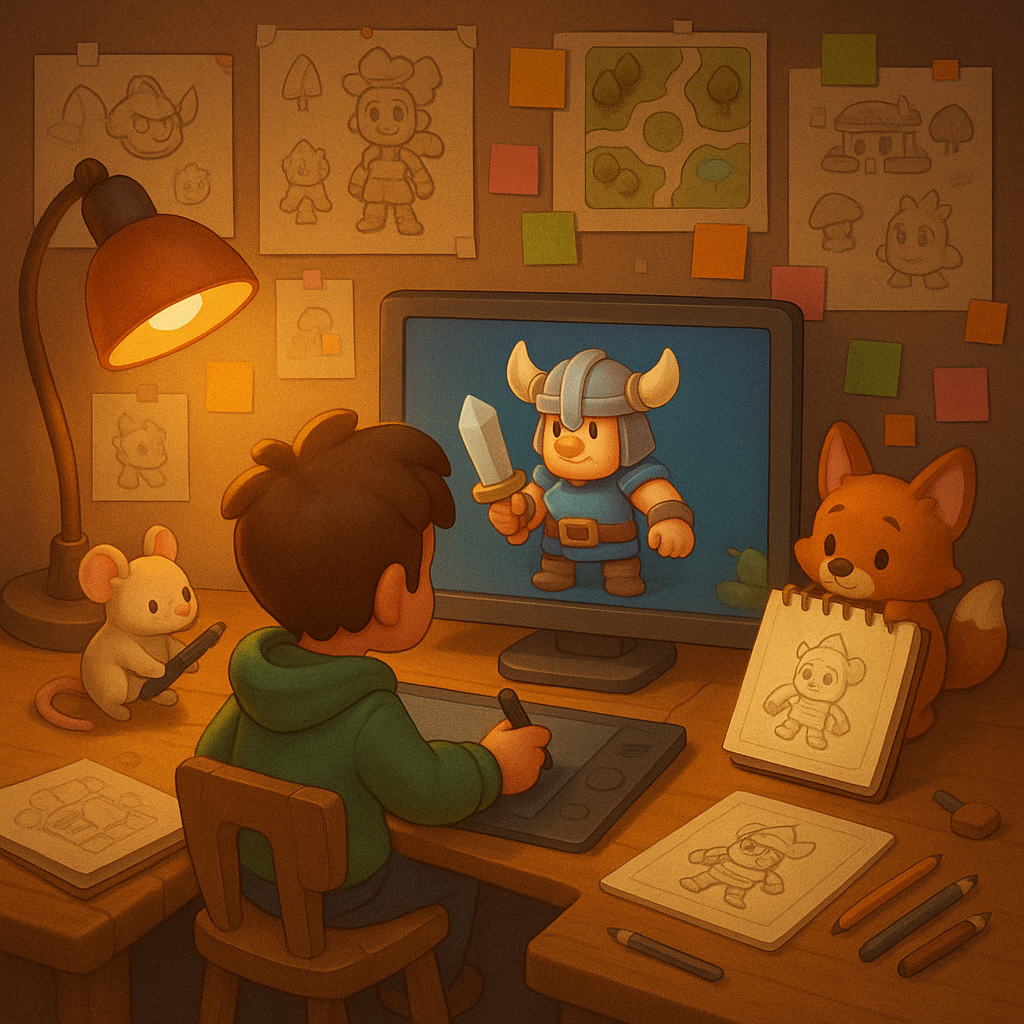Ever wondered how indie games are made? Behind every character, every line of code, and every soundtrack lies a small, passionate team turning imagination into reality.
The indie game development process is a fascinating journey of creativity, experimentation, and persistence — where every idea can become something extraordinary.
Unlike large corporate productions, indie developers often start with a single concept or feeling — a spark that inspires an entire world. They handle everything from programming and art to community management and marketing.
This hands-on approach creates games that feel personal and emotionally connected to the player. Every obstacle becomes part of the story, and every late-night brainstorm adds a touch of magic that no automated system could ever replace.
What Makes Indie Game Development Different
Unlike AAA studios, indie game development thrives on artistic freedom rather than funding.
Small studios can take creative risks, explore emotion-driven storytelling, and focus on authenticity instead of trends.
That’s why indie games feel personal — every pixel reflects the creator’s vision.
What truly sets the indie game development process apart is its balance between chaos and creativity. Developers make decisions quickly, adapt constantly, and often learn multiple disciplines along the way.
This flexibility allows teams to experiment with bold mechanics, visual styles, or unconventional storytelling — whether it’s minimalist puzzles, narrative-driven adventures, or rhythm-based platformers.
The result? Games that surprise players with originality, heart, and purpose — the kind of experiences that remind us why we fell in love with gaming in the first place.
The Indie Game Development Process (Step by Step)
A typical indie game development process includes these key stages:
- Concept & Sketching — defining the idea, theme, and emotional tone.
- Prototype & Testing — building quick models to test the main mechanic.
- Art & Sound Design — creating visuals and atmosphere that immerse the player.
- Iteration & Playtesting — refining, fixing, and polishing until it feels right.
Each phase demands focus, creativity, and teamwork — often from developers working remotely across time zones.
This part of the indie game development process proves that passion can outweigh budgets and technology.
Challenges and Creative Freedom
Indie teams face constant challenges: limited time, funding, and exposure. Yet, that pressure fuels innovation and drives developers to find smarter, more creative solutions.
Iconic indie titles like Undertale, Celeste, and Hollow Knight were created by fewer than ten people — proof that creativity always finds a way, even without massive budgets or global studios behind them.
When every sound, texture, and mechanic is handcrafted, the result feels deeply human and emotionally resonant.
You don’t just play a game — you experience the creator’s world, vision, and heart.
That’s the emotional strength of the indie game development process.

How to Start Your Own Indie Project
If you’ve ever dreamed of making a game, start small:
- Learn Unity or Unreal basics — both engines offer great free tutorials.
- Join indie dev communities on Reddit or Discord.
- Build a simple prototype to test your ideas.
- Focus on gameplay first — visuals can evolve later.
Remember, passion scales better than budgets, and progress matters more than perfection.
The Indie Future
Indie studios continue to push creative boundaries.
Projects like Orion Gaming World show that you don’t need a massive team to create powerful emotional experiences — just vision and dedication.
If you want to explore more about creativity and safe development, read these related articles:
👉 Game Development Trends 2026: Powerful Insights
👉 Unity Vulnerability 2025: “A Critical Silent Bomb” Inside the Engine
👉 Join the community of indie creators who turn imagination into reality.
Follow Orion Gaming World on Discord, Instagram, TikTok, or YouTube to explore behind-the-scenes stories, early concepts, and creative experiments — where small teams make big worlds come alive.


Leave a Reply